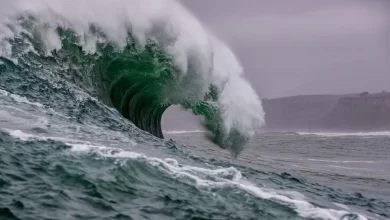Desert is a desolate area of land with little rain and, as a result, hostile living conditions for plant and animal life. Because there is no vegetation, the unprotected surface is vulnerable to denudation processes. Arid or semi-arid regions cover roughly one-third of the world’s land surface. Deserts are important because they have their own ecosystem. Many insect and animal species will become extinct if deserts disappear. Deserts provide food, water, and shelter to a wide range of biotic factors. It also has a diverse range of plants and animals.
- The desert can be described as an area that receives less than 25 centimeters (10 inches) of rainfall annually.
- The word ‘desert’ means an abandoned place.
- Deserts can be categorized into four main categories: Hot and dry deserts, cold deserts, semi-arid deserts, and coastal deserts.
- One-third or approx. Thirty-three percent of the total land of earth is covered in forests.
- In some deserts, you may hear the sand’ singing’. This eerie sound is produced by the wind moving across the sand.
- The largest desert on the planet earth is the cold Antarctic desert, covering the continent of Antarctica with a size of around 5.5 million square miles.
- Antarctica is the only continent in the world that is entirely covered by a desert
- There are over 32 major deserts in the world. The top 3 biggest deserts in the world are the Antarctic, Sahara, and Russian Arctic deserts.
- The driest place on earth is in the Atacama Desert. It lies in northern Chile and southern Peru, in western South America. The Atacama Desert is also considered one of the most dangerous deserts in the world.
- The biggest hot desert in the world is the Sahara. The Sahara desert covers large parts of Algeria, Chad, Egypt, Libya, Mali, Mauritania, Morocco, Niger, Western Sahara, Sudan, and Tunisia. It is covered in 9 million square kilometers (3,500,000 sq mi) of area, amounting to 31% of Africa.
- The Sahara Desert is one of the driest and hottest regions on the globe. The temperatures in summers can reach over 47°C (117 °F).
- The Carcross Desert of Canada is considered the smallest desert on the planet. The Carcross Desert stretches over approximately 2.6 km2 (1.0 sq mi), or 259 ha (640 acres).
- The Gobi is a rain shadow desert formed by the Tibetan Plateau, blocking precipitation from the Indian Ocean from reaching the Gobi territory. It is the 6th largest desert in the world and the 2nd largest in Asia. It is also the fastest growing dessert on the globe.
- The Namib Desert of southern Africa is the oldest desert in the world. This extreme arid Eco region comprises shifting sand dunes, rugged mountains, and gravel plains. The Namib Desert has existed for at least 55 million years and is completely devoid of surface water but bisected by several dry riverbeds.
- The Aralkum Desert or also known as Aral Sands, is the world’s youngest and most toxic desert covering an area the size of the Netherlands. It generates tens of thousands of tonnes of toxic salt dust annually.
References
- Wikipedia-Desert
- Britannica-Desert
- National Geographic-Deserts
- universetoday.com(Desert Coverage on Earth percentage)
- Statista.com(Largest desert on earth)
- Wikipedia-List of Desert by Area
- Wikipedia-Sahara Desert
- Wikipedia-Carcross Desert
- Wikipedia-Gobi Desert
- Worldwildlife.org(oldeset Desert in the world)
- Aljazeera.com(world youngest and toxic desert)






